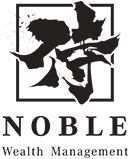NEWS | 2025 GNU Budget (round 2): Prioritising sustainable growth in uncertain times
2025 GNU Budget (round 2): Prioritising sustainable growth in uncertain times

After the false start of 19 February, the 2025 Budget was tabled by Finance Minister Enoch Godongwana on 12 March. The main tax policy proposals announced include raising the value-added tax (VAT) rate by 0.5% in each of the next two years – which will bring VAT to 16% in 2026/2027 – accompanied by no inflationary adjustments to personal income tax brackets, rebates or medical tax credits. These measures will raise an estimated R28 billion in additional revenue in 2025/2026 and a further R14.5 billion in 2026/2027. Carla Rossouw unpacks some of the key takeouts of this Budget that tries to balance the books.
The 2025 Budget speech is finally over the line after the initial attempt came undone following disagreement among political parties over a controversial 2% VAT hike. The delay reflected both the determination of our young government of national unity (GNU) to do things differently, as well as its growing pains amid weak economic growth and simmering geopolitical tensions.
There are glimmers of hope, with the GNU improving business confidence and inflation, as well as interest rates coming down. However, National Treasury acknowledged that “this optimism needs to be translated into more determined action and measurable results, specifically in the form of higher economic growth and improved living standards”.
In a quandary
In a low-growth environment, striking a balance between revenue and government spending, with little wiggle room to significantly hike taxes, continues to be a tough task with inevitable trade-offs. While the available mechanisms to achieve stability in the country’s finances remain restricted (borrow more, raise taxes or limit government expenditure), tangible measures to prevent overborrowing and ensure efficient, essential spending have become pivotal.
Addressing the shortfall
The primary aim of the tax system is to raise sufficient revenue to pay for government expenditure. The government’s three main revenue drivers are personal income tax (PIT), corporate income tax (CIT) and VAT.
The government seems to have run out of levers to pull as it aims to introduce tax hikes without hindering economic growth. The Minister confessed that higher-than-expected increases in public service wages and rising debt-servicing costs have created a growing divergence between government spending and available resources, which must be funded through tax increases, reduced spending or reprioritisation. It was evident in the untabled Budget speech that the pressure was on to find new and alternative revenue streams, which led to the Minister (unsuccessfully) opting for a 2% VAT hike to fill the revenue gap.
Read full article on https://www.allangray.co.za/latest-insights/personal-investing/2025-gnu-budget-round-2-prioritising-sustainable-growth-in-uncertain-times/
March 17 2025 By Carla Rossouw - Allan Gray
